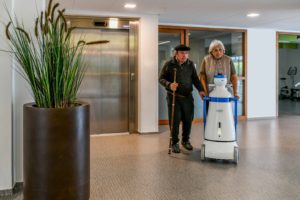UPDATED 5 and 12 March
At 12.25 pm today, according to an email visible on HISTalk, HIMSS has canceled HIMSS20. This cancellation is the first in the 58-year history of the conference.
Quick facts are on HISTalk at the link above, on the HIMSS announcement, and on their FAQs.
The advisory panel recognized that industry understanding of the potential reach of the virus has changed significantly in the last 24 hours, which has made it impossible to accurately assess risk. Additionally, there are concerns about disproportionate risk to the healthcare system given the unique medical profile of Global Conference attendees and the consequences of potentially displacing healthcare workers during a critical time, as well as stressing the local health systems were there to be an adverse event.
Also from the announcement: “HIMSS20 exhibitors and attendees will be contacted with further information regarding booth contracts and registrations. Please contact exhibitors@himss.org for immediate booth concerns.”
The CHIME (College of Healthcare Information Management Executives)/HIMSS CIO Forum symposium on Sunday 8th-Monday 9th is also canceled, per a comment on HISTalk. The only indicator on their website as of now is a large ‘CANCELLED’ on their event list. Later this month is the 5G Executive Forum on 25-26 March in Plano, Texas; is that now being reevaluated?
Neither will be rescheduled for this year. Further chatter on the 3/6 HISTalk centers on what to do with all the promotional items and after-action assessments of losses to marketing and sales. There are companies which center their annual budget and marketing efforts on HIMSS, perhaps not the best ‘eggs in one basket’ strategy, but one that many follow. Hat tip to HISTalk and their ace staff
For our UK and European Readers, Naidex is one of the largest conferences for independent living and healthcare. So far, it is on at Birmingham NEC from 17–18 March, they are taking a long list of precautions based on guidelines set by the WHO and local authorities, but according to their site statement by the event director, it is a fast-moving situation and may change based on those advisories. POSTPONED 10 March–see 12 March update.
Original article follows:
There is a growing list of exhibitor and attendee cancellations for HIMSS20 in Orlando, Florida, starting next Monday the 9th. HIMSS is one of the largest global healthcare conferences, and is a ‘must attend’ for a wide swath of healthcare-related companies, including clinical and monitoring technologies, software from the giants (Microsoft, Cisco) to the startups, hospital systems, payers, telecoms, and all sorts of governmental entities like CMS. (When the opening keynote speaker is President Trump, you know it’s important.)
Health IT website HISTalk, a regular exhibitor at HIMSS, has been tracking the cancellations as of today, doing their own research and following reader leads and public announcements, with a follow up article dated tomorrow. It’s well above 50, with major companies like Humana, Siemens, IBM, and the aforementioned Cisco and Microsoft, on the list. Modern Healthcare has an update.
Based on the comments and HIMSS’ own advisory, HIMSS is accepting cancellations from the CDC’s Level 3 or 4 alert countries, but other cancellations are not being refunded (likely pushed to 2021). Hotels/airlines may not be refundable based upon policies and the clout of travel bookers. Onsite, HIMSS is preparing onsite medical offices for care and screening, as well as promoting the HIMSS elbow bump in lieu of the handshake. It’s regrettable as there are hundreds of staff involved year to year who are responsible for all the planning, marketing, logistics, and security for HIMSS and any conference of this size.
The major reason? Many companies, including healthcare companies, have indefinitely canceled non-essential travel across the board for the next 30 to 60 days as a matter of institutional policy. The large destination conferences taking place March-June are the most affected by this. Consider that for the immunocompromised, attending any large conference is dicey, but COVID-19 is one large red flag.
IBM has canceled Think 2020 in May, which regularly attracts 30,000 attendees to San Francisco. Mobile World Congress Barcelona, the largest in the telecom sector which crosses over to mobile-based healthcare, canceled two weeks before starting on 24 February. The American Physical Society (physics) canceled this week’s conference in Denver the day before it started. The LA Times has a roll call of canceled conferences including Facebook and Google I/O. Others remain on, but monitoring the situation: the American College of Healthcare Executives Congress on 23 March and EPIC 2020 in Croatia 19-21 March [TTA 16 Jan].
Small, local conferences and meetings are the least affected, so you’re probably safe in London and NYC. The King’s Fund has a full roster of London meetings, including the Digital Health and Care Congress 2020 on 20-21 May. Upcoming are also DHACA Day on 18 March and the NYC meetings listed last week. (Don’t go if you’re sick, steer clear of the inconsiderate, avoid buffets, and wash your hands!)
HISTalk’s 5 March article (scroll down) reports on the findings from the leader of the WHO team which spent two weeks in China studying their COVID-19 response. China is moving patients from their best hospitals to ‘routine care’ to accommodate COVID-19 patients. Children do not seem to become infected or be carriers. The trend in infection there is trending down. Overall, it seems to be a series of global outbreaks, not a global pandemic. And they came away with a fatality rate in China of 1-2 percent, which seems low based on other reports.













Most Recent Comments